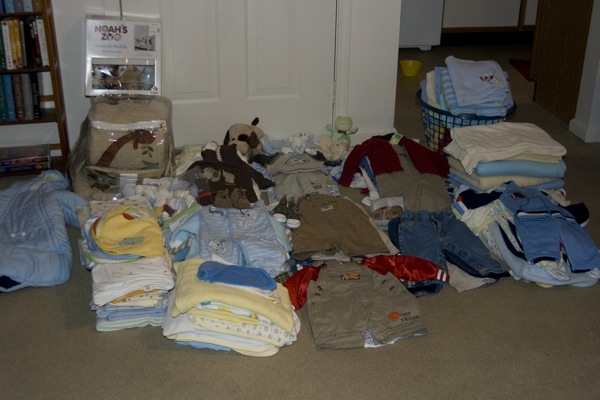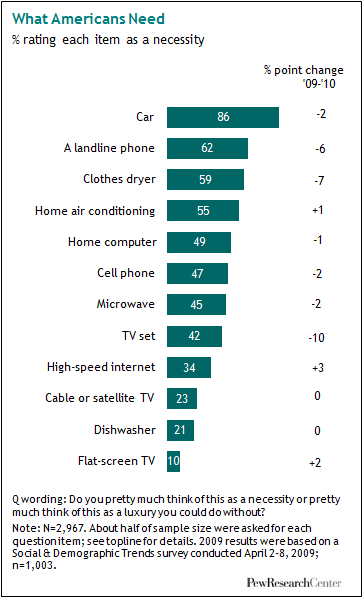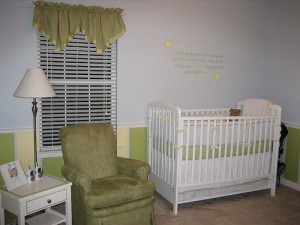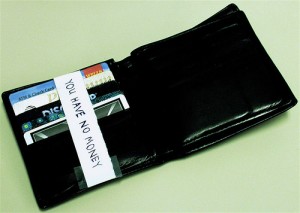When we first announced that I’m pregnant, Tony’s incredibly sweet grandmother asked hesitantly how I felt about used items. Apparently, she didn’t want to offend me by giving us used baby stuff if we weren’t into the idea. Pfft. Of course, I told her we LOVE to buy used things and that we’d be incredibly grateful for any gift she bestowed upon us. If it’s used and she can get it for a good price then all the better.
Tony’s grandmother spends a lot of her weekends in the summer hopping from yard sale to yard sale. She finds used items in good condition and haggles the seller down to an even better price. If it’s an item she needs or she knows someone who needs it, she keeps it or gives it away. Otherwise she resells it at her own yearly yard sale for a profit. She’s a smart lady!
Last weekend when we visited Tony’s family, she told us she’d be bringing over all of the baby stuff she scored at yard sales for us this summer. I told her we’d love to see her, but if she’d like to wait until the baby shower to bring the items that would be fine. She said no, she’d rather bring it before the baby shower because she wasn’t sure we’d have room to take everything back home with us in addition to any baby shower gifts.
I assumed she’d picked up a few outfits here and there. Imagine my surprise when Tony and his dad carted in three enormous boxes packed full from his grandparents’ car.
Behold:
Included in the stash:
- A metric ton of baby boy clothing in various sizes from newborn to 12 months, including sweaters, onesies, jeans, and pajamas. (The clothing is stacked by size in the photo, so each visible outfit is covering up a ton of other outfits.)
- A bag full of baby socks in various sizes.
- Several bibs.
- Two snowsuits.
- At least 25-30 cozy blankets and receiving blankets (Maybe more. I didn’t count.)
- A set of crib bedding with a cute jungle theme.
- A jungle-themed musical mobile for the crib.
- Some cute stuffed animals.
- Not pictured: A bouncer seat, walker, and three strollers.
All of it is in excellent condition (some items even still have store tags on them!) She even pre-washed all of it for me, so the newborn and 3-6 month stuff is ready to be folded and put into his dresser for his arrival home. The rest has been organized by size and stored for future use.
I am absolutely blown away by her generosity and incredible thrift. I’m definitely going to need to get some yard sale-ing tips from her!
We still have TWO baby showers coming up (one for each of our families since they live several hours apart). I almost feel like we’re set for baby clothes, but I know there will likely be more clothing from our friends and family members who attend the baby showers. I have a feeling I’m going to be writing a post about creative storage solutions for small apartments in the near future.







